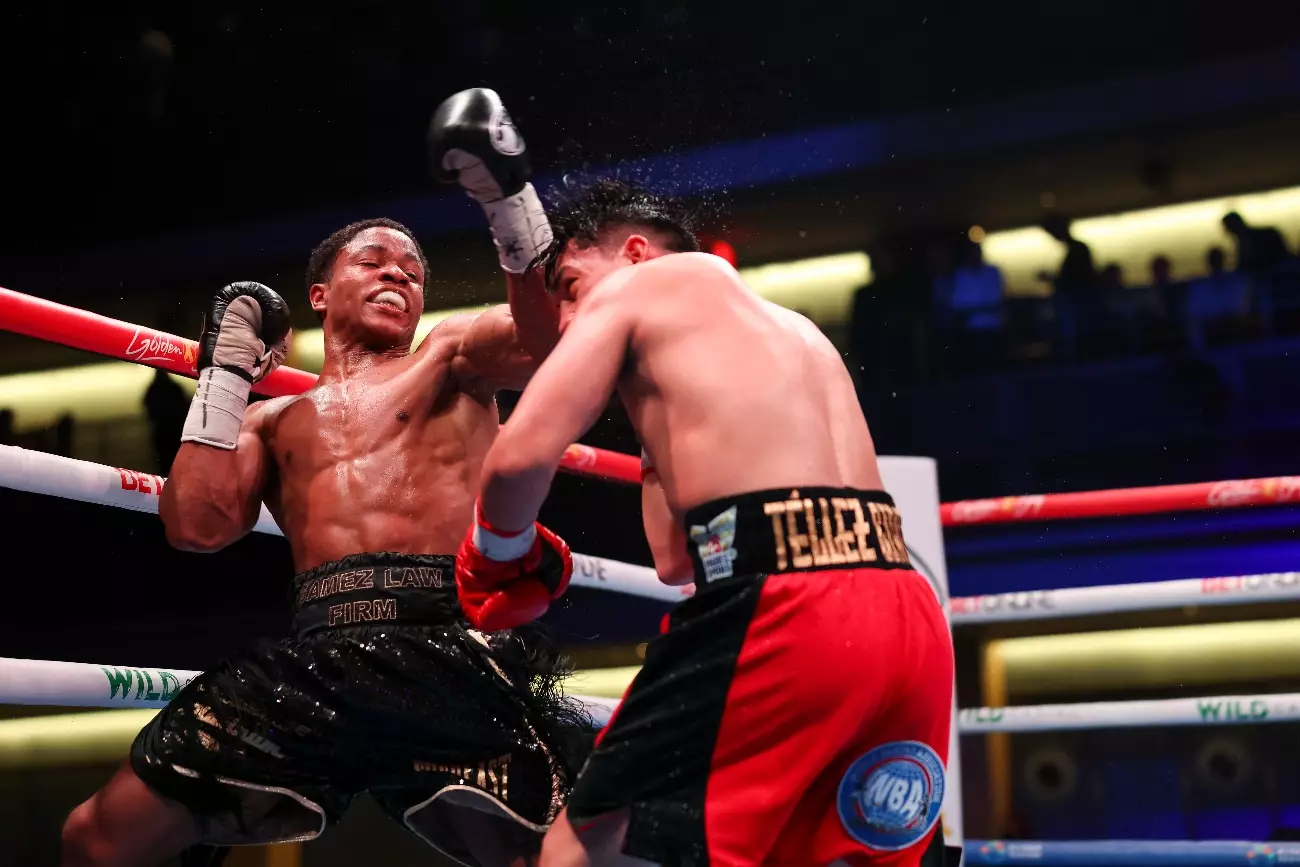In the volatile world of boxing, the balance between ambition and experience can dramatically affect a fighter’s trajectory. Oscar De La Hoya has raised a pertinent point regarding the decision of Floyd ‘Kid Austin’ Schofield Jr. to challenge reigning WBC lightweight champion, Shakur Stevenson, at this relatively early stage of his professional career. While Schofield, boasting an undefeated record of 18-0 with 12 KOs, demonstrates undeniable potential and a tenacious spirit, the underlying question remains: is it wise for him to step into the ring against such an accomplished opponent at this time?
De La Hoya’s perspective indicates a well-thought-out plan to nurture Schofield’s talent over a controlled and progressive career path. It is natural for budding boxers to crave opportunities that could elevate their careers quickly, but an open challenge against an experienced champion can often be more perilous than beneficial. The presumptions about Schofield’s capabilities, buoyed by his ambitious nature and pressure-driven fighting style, cannot overshadow the glaring truth that he is facing off against an opponent who has mastered the art of boxing.
Stevenson possesses a unique arsenal characterized by his Philly shell defense, a style that has frustrated many would-be challengers with its effectiveness. For Schofield to secure victory, he must leverage his attributes—namely, pressure fighting and utilizing his jab—to dismantle the defensive layers Stevenson employs. De La Hoya emphasizes that the key to overcoming Stevenson lies in a proficient jab and maintaining a high guard, striking a balance between aggression and tactical execution.
This approach suggests a fundamental insight into the inherent intricacies of boxing: while raw power can be an asset, intelligent use of technique often leads to sustainable success. By fighting “tall” and maintaining pressure, Schofield can potentially neutralize Stevenson’s agile movements, a tactic often overlooked by fighters who prefer a crouching style that unwittingly plays into Stevenson’s strengths.
Motivation Behind the Match
One cannot dismiss the financial motivations fueling this bout. It is evident that both Schofield and his father, Floyd Sr., are eager to capitalize on the opportunity against Stevenson. The allure of a high-stakes fight often overshadows concerns about experience or readiness, especially when substantial monetary rewards are at stake. Schofield’s last performance may provide a hint of his capabilities, but stepping up to this level of competition seems prematurely ambitious for a fighter yet to face top-tier opponents consistently.
Moreover, the timing of the match favorably coincides with Stevenson’s recent injury layoff, presenting a chance for Schofield to potentially exploit perceived vulnerabilities in his adversary. The dynamics of injury in sports can play a monumental role, and if Schofield can apply relentless pressure and capitalize on any lingering disadvantages Stevenson may harbor, he stands a fighting chance.
Schofield’s strategy against Stevenson must be multifaceted, focusing primarily on maintaining his rhythm, executing effective jabs, and employing rapid footwork to be in constant pursuit of his opponent. His youth and agility contrast sharply with Stevenson’s seasoned prowess; thus, Schofield must facilitate a high-paced fight that reflects his athleticism. This includes cutting off the ring decisively, thereby reducing proclivity for Stevenson to counterattack with his own superior skills.
De La Hoya emphasizes the importance of conditioning and fight IQ in successfully executing this strategy. The element of surprise can often disrupt the flow of a fight, and if Schofield can apply unpredictability within his offensive game, he could unlock pathways to victory. However, underestimating Stevenson’s ability to adapt and counter could result in dire consequences.
Ultimately, the challenge posed to Floyd ‘Kid Austin’ Schofield Jr. by Shakur Stevenson is rife with uncertainty yet replete with opportunity. As De La Hoya’s insights suggest, the fight transcends mere chance; it’s a confluence of strategy, ambition, and the raw desire to compete at the highest level. While the professional boxing landscape is littered with cautionary tales of fighters who rushed into challenging waters too soon, there lies an equally compelling narrative of those who defied expectations and claimed glory against the odds.
The February 22nd clash in Riyadh, Saudi Arabia, will not just be a test of boxing skill but also a monumental moment for both fighters, questioning traditional pathways to success and exploring the very essence of what it means to be a champion in today’s boxing arena. Schofield’s decision will remain a book yet to be written—a gamble that could cement his legacy or prompt a reevaluation of his career path.


Leave a Reply